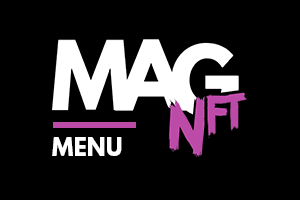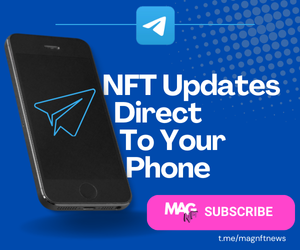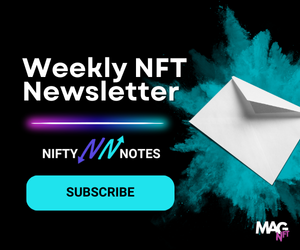- Hitting pause as we await the next phase of Web3 growth.
- Wilder World To Enter ‘Super Early Access’ in Late July 2025
- Treeverse Releases $END Whitepaper, Token Launch Expected Soon
- Draftables to Launch Pre-Season Tournament, Starting June 27
- Evermoon Rebrands as Evermoon Games, Expanding Beyond MOBA
- Uncharted Launches Wallet-Based Rewards
- Wildcard and Thousands Raise $9M to Drive Blockchain Gaming and Web3 Streaming
- On-Chain MMO Block Stranding Completes First Stress Test
Author: Rich
When it comes to NFTs, one company undoubtedly reign as the kings of the industry – Yuga Labs. In the space of three-and-a-half years, they’ve gone from a group of four friends to an industry giant, managing NFT collections with a market cap well over $1 billion USD, counting endless celebrities amongst their fans, and achieving worldwide recognition. Now, the company is forging new paths in metaverse gaming – and with multiple new projects on the horizon, Yuga Labs continue to grow not just themselves, but the NFT industry at large. How did Yuga Labs become what it is today?…
In all things blockchain, security is the top priority. A trusted software wallet is key, but the safest storage option is a hardware wallet. Hardware wallets add a layer of security by storing your private keys offline, and by confirming your transactions on a physical device. Two companies have dominated the hardware wallet space – but there’s also a variety of increasingly popular alternatives. What are the best hardware wallets of 2025? Here’s our complete 2025 guide. #6 Ledger Stax Launch: May 2024 Price: $399 USD The Ledger Stax is the latest flagship device from hardware wallet manufacturer, Ledger. With…
Bitcoin started the blockchain industry, but one chain pushed its potential to a whole new level: Ethereum blockchain. Ethereum was the first blockchain to support smart contracts, and therefore decentralized applications (dApps). Today, Ethereum powers many aspects of web3, including NFTs, blockchain gaming, DeFi and more. Almost 10 years after it began, Ethereum continues to improve on speeds, reliability and costs – but how has it become the giant it is today? Let’s take a look in our 2025 guide to the Ethereum blockchain. What is Ethereum? The idea for Ethereum comes from Vitalik Buterin, a talented programmer and co-founder…
There are dozens of Ethereum Layer-2 blockchains in existence, but one stands out for its commanding status, its appeal to both developers and users, and it’s great deal of success to date: Polygon blockchain. Polygon is perhaps the most popular blockchain for both home-grown developers and major brands looking to enter the blockchain industry, and is home to a staggering number of quality apps, tools and services – all backed by Polygon’s ample support, reliability and user-friendly nature. With all this said, what made Polygon into the success it is today? Why is it such a force in the blockchain…
When we talk about blockchains, the terms Layer-1, Layer-2 and Layer-3 are all used quite often – but what do these terms mean, and what are the differences between the three? If you’re looking for the short answer: Layer-1 blockchains are major networks, such as Bitcoin, Ethereum and Solana. They are all-purpose, generalised tools, rather than optimised for a specific task. This means transaction speeds are low, and transaction costs are high. Layer-2 blockchains are side networks, built on top of Layer-1 blockchains, such as Polygon, Immutable, and Base. They often support a specific niche, e.g. blockchain games, and process…





